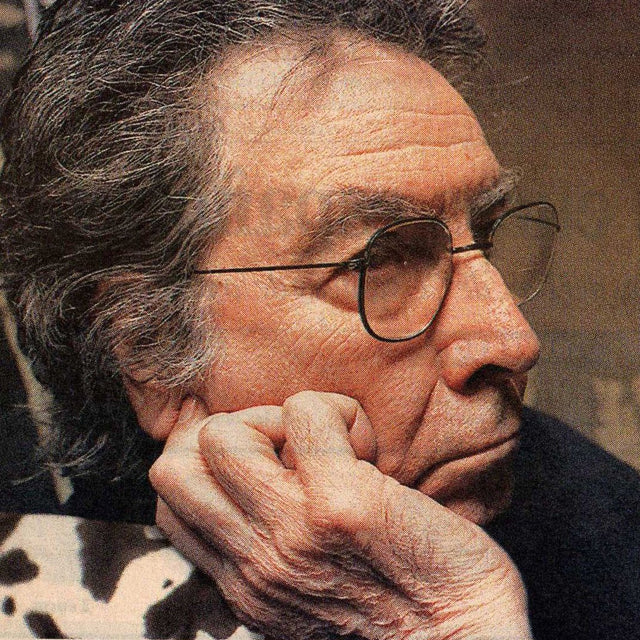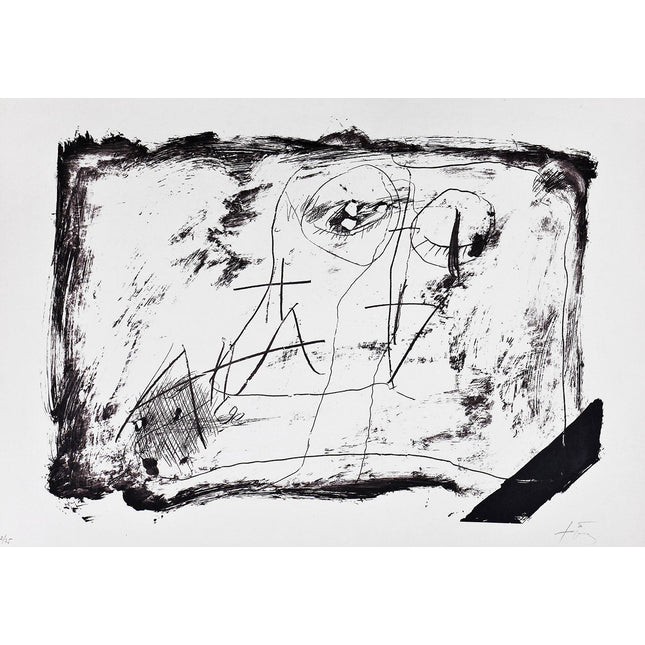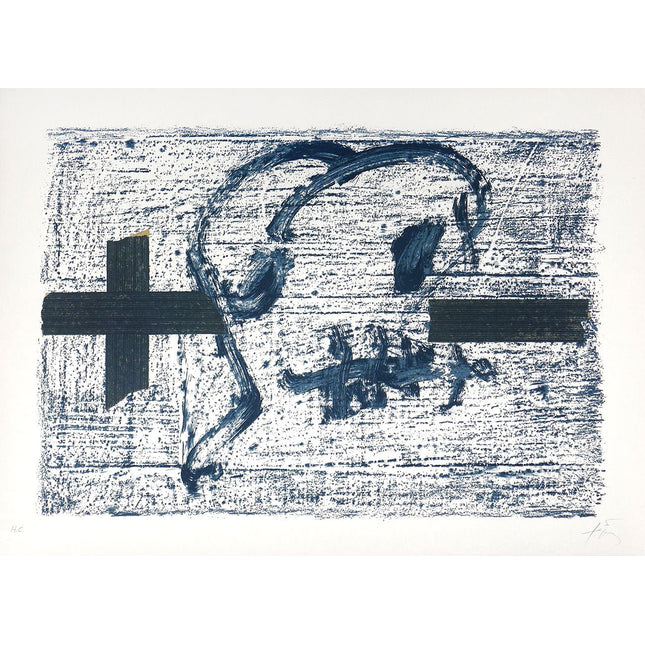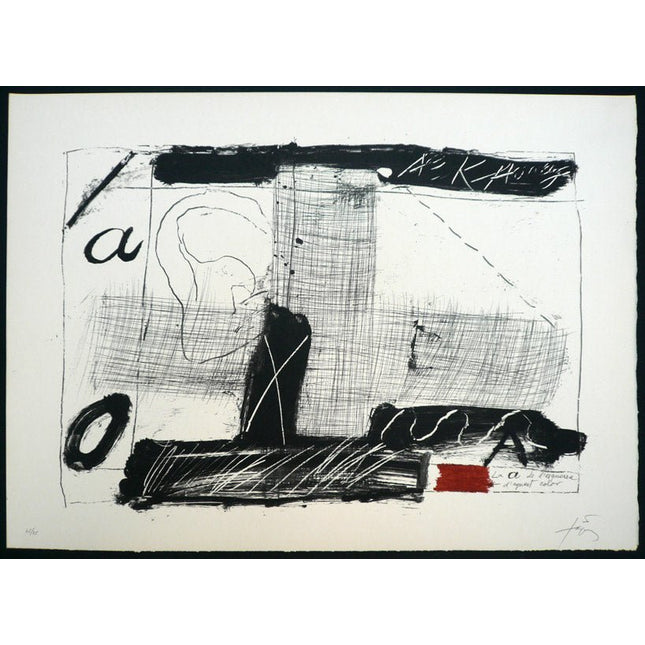Antoni Tàpies was born December 13, 1923, in Barcelona. During the Spanish Civil War he was affected by pneumonia, and, during the illness recovery he started painting. Tàpies began to study law in Barcelona in 1944 but dropped them to be fully dedicated to art. He was essentially self-taught as a painter. Shortly after deciding to become an artist, he began attending clandestine meetings of some of the Catalan artists and writers of the time that formed the Blaus, an iconoclastic group who produced the review Dau al Set.
Tàpies's early work was influenced by painters like Max Ernst, Paul Klee, and Joan Miró. He had his first exhibition in the controversial Salo d'Octubre in Barcelona in 1948. He soon began to develop a recognizable personal style related to matière painting, or Art Informel, a movement that focused on the materials of art-making. As a result he created textural richness, but his most important aim was the exploration of the transformative qualities of matter,working with detritus, earth, and stone to develop his large-scale works.
In 1950, his first solo show was held at the Galeries Laietanes, Barcelona. Also in this year, the French government gave Tàpies a scholarship that enabled him to spend a year in Paris. The Martha Jackson hosted in 1953 his first solo exhibition in New York. During the 1950s and 1960s, Tàpies exhibited in major museums and galleries throughout the United States, Europe, Japan, and South America. In 1972 Tàpies received the Rubens Prize of Siegen in Germany.
Tàpies while painting and making sculptures has also been a prolific printer, using mainly etching and lithographic techniques to produce his works. In 1967 had his first solo exhibition at the Galerie Maeght establishing since then a professional relationship that continues for many years printing many of his graphic works.
In 1966, Tàpies joins in a clandestine meeting at the Capuchin monastery in Sarrià, Barcelona, where the theme of discussion was the creation of the first democratic university union since the end of the Civil War. After several days confinement, all of the participants were arrested and fined. All the Spanish cultural elite asked the Spanish Supreme Court for the sanction imposed to Tàpies had to be ratified, and so it was done in 1971. At the VI Biennale de Menton he received the Grand Prix du Président de la République Française. The XV International Congress of Artists, Critics and Art Scholars in Rimini awarded him with the Gold Medal for the moral and artistic value of his work.
Retrospective exhibitions were presented at the Musée National d'Art Moderne, Paris, in 1973 and at the Albright-Knox Art Gallery, Buffalo, New York, in 1977. In the early 1980s, he started working with other mediums, producing his first ceramic sculptures and designing sets for Jacques Dupin play L'Éboulement . By 1992, three volumes of the catalogue raisonné of Tàpies's work had been published. The next year, among with Cristina Iglesias represented Spain at the Venice Biennale where their installation was awarded with the Leone d'Oro. A retrospective exhibition was presented at the Galerie Nationale du Jeu de Paume, Paris, and the Guggenheim Museum SoHo, New York, in 1994 - 1995.
In 1984 the Fundació Antoni Tapies was built, to promote the study and knowledge of modern and contemporary art.



